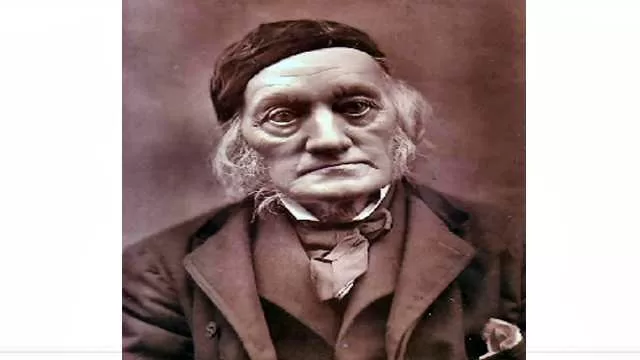Uncover the Shocking Truth About Richard Owen’s Legacy!
When we think of historical figures in science, we often envision them as paragons of virtue, dedicated to the pursuit of knowledge and the betterment of humanity. Richard Owen, a prominent 19th-century anatomist and paleontologist, might initially seem to fit this mold.
Born in Lancashire, England, Owen was instrumental in the establishment of the Natural History Museum in Kensington, advocating for public access to scientific knowledge at a time when such institutions were often reserved for elite scholars.
However, a closer examination of his life reveals a more complex and troubling character, one whose contributions to science were often overshadowed by his questionable ethics and contentious relationships.
Early Life and Ambitions
Owen’s fascination with anatomy began in his teenage years while training in Lancaster. He started a collection of mammal skulls, which included various species like dogs, deer, and cats. However, his ambition took a dark turn when he attended the post-mortem of a black prisoner who had died in Lancaster Gaol. Determined to add the skull to his collection, Owen executed a bizarre plan: he snuck into the dissection room at night, procured the skull, and made a hasty exit. This incident, which involved a comical yet eerie encounter with a cottage’s inhabitants, foreshadowed the ethical ambiguities that would characterize his career.
A Rising Star in Science
After studying medicine in Edinburgh and London, Owen’s career flourished. He became a professor at the Hunterian Museum and published numerous influential works on comparative anatomy and paleontology. His first major publication, Memoir of the Pearly Nautilus (1832), established him as a leading figure in the scientific community. Owen’s expertise was recognized internationally, and he was chosen to study the fossils collected by Charles Darwin during his voyage on The Beagle. Owen’s identification of these fossils as related to existing species in South America played a crucial role in Darwin’s development of the theory of evolution by natural selection.
Dinosaurs and the Great Exhibition
One of Owen’s most notable contributions was coining the term “dinosaur,” derived from the Greek words for “terrible lizard.” He collaborated with sculptor Benjamin Waterhouse Hawkins to create life-size models of dinosaurs for the Great Exhibition of 1851. These models, displayed at the Crystal Palace, were a significant public engagement with paleontology. Owen even hosted a dinner party inside the model of an Iguanodon, showcasing his flair for theatricality. However, the inaccuracies in these models—such as depicting the Iguanodon as a bulky quadruped rather than a more agile biped—would later tarnish his reputation.
Controversial Reputation
Despite his scientific achievements, Owen’s character was marred by allegations of plagiarism and unethical behavior. He often took credit for the work of others, notably overshadowing Gideon Mantell, the true discoverer of the Iguanodon. Owen’s failure to acknowledge Mantell’s contributions and his misrepresentation of the dinosaur’s anatomy exemplified his tendency to prioritize personal glory over scientific integrity.
In 1844, Owen presented a paper on fossil belemnites, neglecting to credit Joseph Channing Pearce, an amateur biologist who had previously discovered the belemnite. This oversight led to a scandal that resulted in Owen’s removal from the councils of the Royal Society and the Zoological Society. His pattern of misappropriating others’ work continued, as he used illustrations from Mantell’s publications without proper attribution.
The Fallout with Darwin
Owen’s relationship with Charles Darwin began on amicable terms but soured over time. He became the only person whom Darwin openly despised. In a particularly underhanded move, Owen published a critical review of Darwin’s On the Origin of Species in the Edinburgh Review, cloaked in anonymity. While praising his own work, Owen disparaged Darwin’s theories, further straining their relationship. Darwin later expressed his disdain, stating, “I used to be ashamed of hating him so much, but now I will carefully cherish my hatred & contempt to the last days of my life.”
Legacy of Discontent
Owen’s later years were marked by a reputation for being difficult and unlikable. His son, William, who tragically committed suicide at the age of 49, lamented his father’s “lamentable coldness of heart.” Critics described Owen as “a most deceitful and odious man,” and after his death, an Oxford professor referred to him as “a damned liar.” Such sentiments reflect a broader consensus that Owen’s scientific contributions were overshadowed by his moral failings.
Conclusion: A Complex Legacy
Richard Owen’s life serves as a cautionary tale about the complexities of scientific achievement. While he made significant contributions to anatomy and paleontology, his unethical behavior and contentious relationships with contemporaries like Darwin and Mantell cast a long shadow over his legacy. As we reflect on Owen’s life, it is essential to recognize that the pursuit of knowledge is often intertwined with personal ambition and ethical considerations.
In the end, Richard Owen may not be the “Good Guy” we hoped for in the annals of science. His story reminds us that the path to discovery is fraught with challenges, and the character of those who walk it can be as important as their contributions to knowledge.

